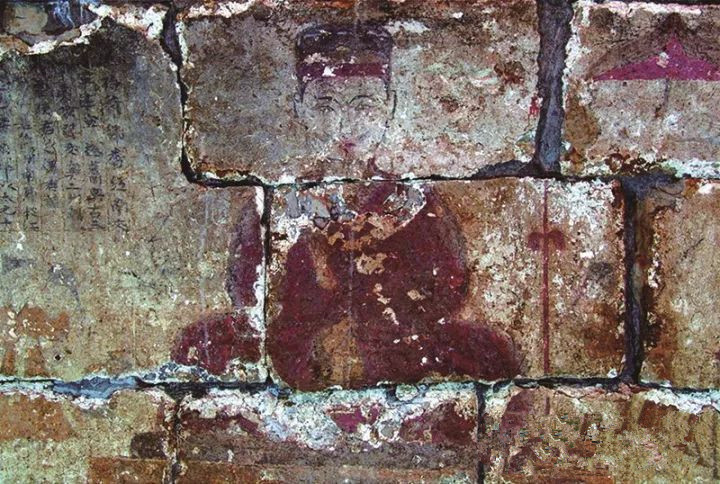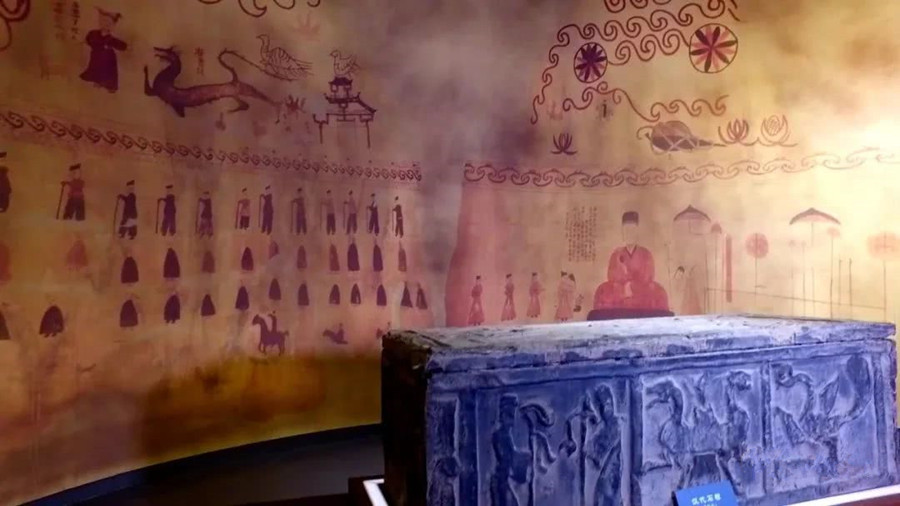The Tomb and Murals of Huo Chengsi in Zhaoyang District, Zhaotong
Chinese Name: 昭通昭阳区东晋霍承嗣墓壁画
English Name: The Tomb and Murals of Huo Chengsi in Zhaoyang District, Zhaotong
Historical Background
The Tomb of Huo Chengsi, dating from the Eastern Jin Dynasty, was discovered in the spring of 1963 in Zhongzhai, near Houhaizi, northwest of Zhaotong County. It was relocated to the former Confucian Temple in Zhaotong County for preservation in winter 1965. This tomb represents one of the earliest known examples of Eastern Jin Dynasty mural tombs found in Yunnan and is rare in China for its specific era and geographic context.
Huo Chengsi, the tomb’s owner, was a descendant of Huo Jun and Huo Yi. He held positions as the governor of Jianning, Yuecui, and Xinggu prefectures, and also served as a South Yi General and the Inspector of Jiaozhou and Ningzhou. He was posthumously titled Marquis of Chengdu County.
Description of Murals
Tomb Structure:
- Shape: Square, with stone slabs lining the walls and a domed ceiling.
- Decorations: Richly painted murals cover the ceiling and walls, with inscriptions in clerical, regular, and cursive scripts.
The murals are divided into two main layers on each wall, with mythological scenes on the upper layers and realistic depictions on the lower layers. The artwork is characterized by its relatively rough and simplistic style, indicative of common folk artists of the time.
Northern Wall:
- Upper Layer: Depicts a scene with swirling clouds and a distant figure riding a horse and shooting at game. Nearby, a long snake battles with a turtle.
- Lower Layer: Features a portrait of Huo Chengsi himself, seated with a fan, dressed in a red robe and black hat. The inscription on the upper left corner includes eight lines of text with the reign era “Taiyuan,” corresponding to Emperor Xiaowu’s period (386-394 AD). This indicates the tomb was used for soul summoning and sacrifices, reflecting traditional practices from Jingzhou.
Eastern Wall:
- Upper Layer: Shows a running tiger surrounded by birds like cranes, eagles, and pheasants, with a pavilion, stone gate, and deer in the background.
- Lower Layer: Illustrates two rows of people: the upper row consists of thirteen warriors with flags, five in black and eight in white, while the lower row shows five armored warriors on horseback, with a dog running among them.
Western Wall:
- Upper Layer: Features a dragon with a woman offering grass to the dragon, surrounded by birds, beasts, and pavilions.
- Lower Layer: Divided into four rows:
- First Row: Thirteen warriors with curved blades.
- Second and Third Rows: Twenty-seven figures dressed in ethnic Yi attire, some barefoot, indicating a blend of Han and Yi cultures.
- Fourth Row: Four mounted warriors.
This blend of Han and Yi elements in the murals reflects the integration of different ethnic groups, showcasing the historical interactions between Han Chinese and the Yi people.
Southern Wall:
- Structure: The wall includes two stone doors with a horizontal beam above, featuring a single layer of painting with armored warriors, labeled as “Middle Gate Marquis,” suggesting their role in guarding the tomb. There are also Daoist talismans on either side.
Artistic and Historical Significance
While the artistic technique of the murals may be considered rudimentary compared to other historical artworks, they offer valuable insights into various aspects:
- Artistic Value: The murals demonstrate a clear division between the main figure (Huo Chengsi) and other characters, with the use of colors maintaining their vibrancy over centuries.
- Military and Ethnographic Insight: The murals provide detailed depictions of armor, weapons, and the presence of both Han and Yi soldiers, shedding light on the military practices and ethnic composition of the time.
- Societal and Ideological Context: The murals reveal social hierarchies, the status of the deceased, and various mythological and religious themes, offering a glimpse into the social and ideological landscape of the Eastern Jin Dynasty.
Overall, the tomb and its murals are a significant cultural heritage, reflecting the historical, artistic, and ethnic diversity of the period.















